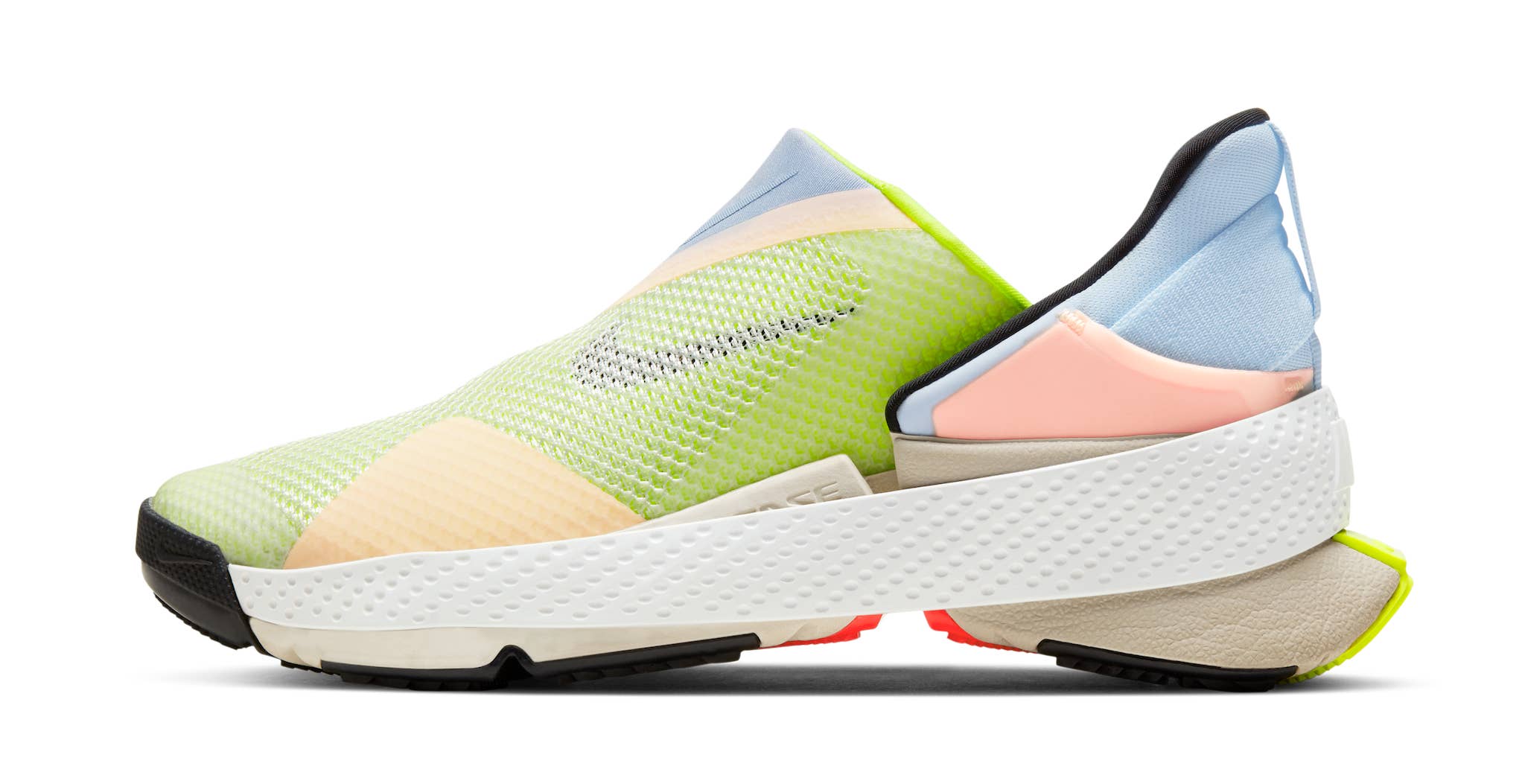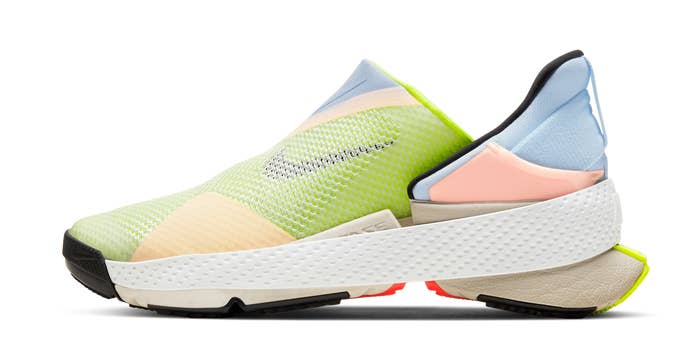
What was supposed to be one of Nike’s most accessible sneakers has turned out to be anything but. The new Go FlyEase, which had its first significant launch in North America this past week, was touted as a hands-free model that could benefit everyone. But not everyone can participate in hyped sneakers. The limited quantities it arrived in (Nike did not disclose how many released, as is its standard) meant that many of the pairs were bought by resellers looking to make money off them on the secondary market. Though the shoe is inclusive in its design, it was exclusive in its release.
“The shoe itself has been so hyped up and praised for its inclusiveness and its accessibility for people like myself with a disability that it’s become limited and resellers and bots have got ahold of all the pairs and gouged the price up,” said 19-year-old Louie Lingard in a TikTok reaction video that went viral over the weekend. “Now, if someone with a disability that actually needs the shoe for the design purpose wants it, they’re gonna have to pay on the up end of $500 to get it.”
His video was reposted across Instagram. The original has 1 million views on his TikTok account, where he’s uploaded other sneaker reviews and reactions. A version of his Go FlyEase clip posted to Twitter has almost 6 million views.
The latest colorway of the Nike Go FlyEase, which retailed for $120, now costs several times that on resale sites.
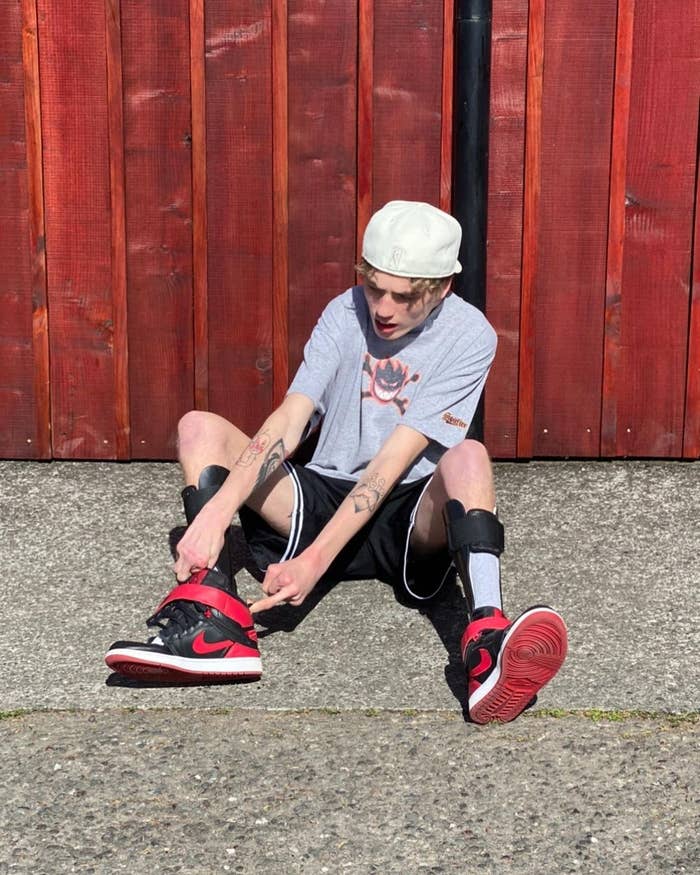
This story of the shoe’s arrival is not totally unique—every weekend, people miss out on sneakers that they want and turn to the resale market as a solution. But the Go FlyEase is unique. FlyEase technology, which Nike uses in a variety of shoes, is sold as a tool that expands access and makes shoes easier to put on and take off. On some level, the Go FlyEase is a shoe designed for disabled people, meant to solve a need for a market that hasn’t historically had cool footwear options from big brands. If Nike wants the shoes to fulfill that goal, it has to be more explicit about their intent and more purposeful in the way it releases them.
Lingard is well-acquainted with how different forms of exclusivity impact sneakerheads. He has been collecting sneakers since 2016, but has had to skip out on some because of his disability.
“Kobes are narrow as hell. I couldn’t wear them growing up and it devastated me,” Lingard says. “For so long, every time I’d go to Foot Locker I’d try them on, they never worked; I’d leave really disappointed.”
His eventual solution for getting the sneakers he wanted was to buy larger sizes so he could more easily get them on his feet. Part of what makes putting shoes on difficult for Lingard is he has to maneuver them around the ankle foot orthosis braces he wears to help him walk. The Nike FlyEase technology solved this for him.
Lingard, a fan of the Air Jordan 1, usually needs five to 10 minutes to put on a standard pair of shoes. His FlyEase Air Jordan 1s take him one minute. The shoes use a wraparound zipper and straps instead of laces. Of course, he had to buy them from resale site Goat. He couldn’t get them directly from Nike’s SNKRS app, they were too limited.
“These I tried to buy on SNKRS the day of the release and I took the L,” he says during a FaceTime call, holding up the “Bred Toe” colorway of the shoe that released in November 2019.
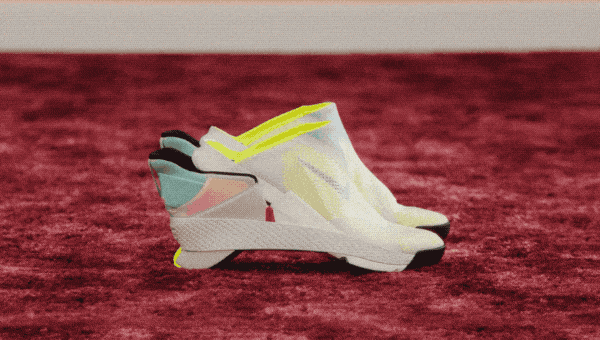
Not all of Nike’s FlyEase sneakers are hard to get. There are 25 styles of them available now on nike.com. The “Bred Toe” Air Jordan 1 FlyEase is not particularly expensive on the resale market, going for 40 percent over its original price on StockX.
Even the Go FlyEase will be easier to get in the future. As gross as it may feel when applied to a sneaker that has the real potential to help disabled people, the practice of introducing a new shoe first through a limited drop and then bringing more to market later is common for Nike. And the company itself is having problems getting shoes right now, with the effects of the coronavirus on global supply chains still lingering.
A Nike spokesperson declined to comment for this story, but pointed to the Nike app’s product description of the Go FlyEase for reference on how it was released.
“We are kicking off the launch of this shoe with an opportunity for more adaptive athletes and people of all abilities to purchase,” the app reads. “We’ve offered the shoe first to the members who’ve had the most interest in our Nike FlyEase products. Additional colorways of Nike Go FlyEase will be available later this year.”
The explanation, like most Nike gives for how it decides to drop shoes, is not very transparent. It suggests that there was an effort to give disabled people and those who logged activity around similar shoes in the app priority for the Go FlyEase. Still, there’s been a decent amount of resale activity around them between last weekend’s launch and the even more limited one in February. Over 1,600 pairs have already been sold on resale site StockX.
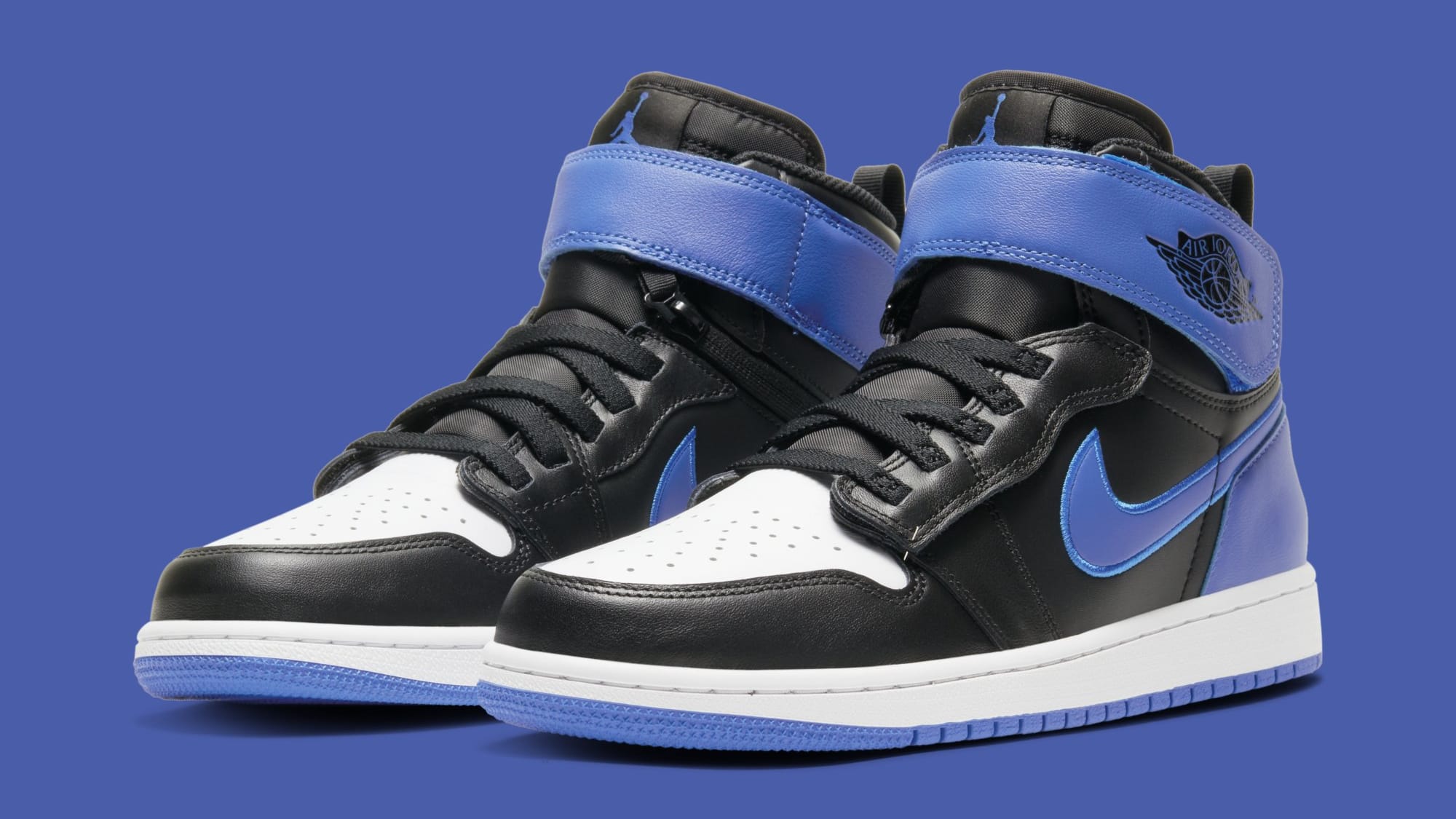
Lingard believes resellers are to blame for rushing to make a profit off the sneakers, but that Nike is more to blame for its failure to get more of the shoes to people with disabilities.
“I don’t want to completely attack reselling because we’ve all bought shoes for resell,” he says. “It’s just something that you have to do when you’re into sneakers.”
The controversy over the Nike Go FlyEase will not be the denouement of this painful reality. Cowen Equity Research estimated in 2019 that the global sneaker resale market was as big as $6 billion. If there is an undoing brewing, it will be a long one. But reactions to the resale prices are emblematic of growing concern over sneaker flipping. Justin Gallegos, a Nike-sponsored runner with cerebral palsy, posted about the Go FlyEase on his Instagram on Sunday, calling the situation depressing and extremely frustrating.
“Sneakerheads have a duty to speak up about what is and isn’t acceptable in the world of sneakers,” Gallegos wrote. “Reselling a sneaker that is supposed to promote inclusiveness and accessibility for own personal gain and profit shouldn’t be tolerated.”
In the same caption, he pledged to use his connections at Nike to advocate for a more fair means of distribution for shoes like the Go FlyEase. His frustration around sneaker reselling is familiar for anyone even marginally interested in the hobby of collecting footwear. As more pairs are being bought and resold through sites like Goat and StockX, more people are seeking solutions to this middlemanning.
Anna Bediones, the director of women’s strategy at Sole Savy, an online sneaker community that combats reselling by giving its members tips and advantages for buying hard-to-get sneakers, thinks secondary marketplaces should be held accountable for their role in the profiteering. She proposes that resale sites stop users from listing shoes like the Go FlyEase, or only allow them to be sold at their original retail price.
“It takes away the appeal of an instant flip,” Bediones says. “It’s hard to regulate the aftermarket in terms of what’s considered ethical to sell at extreme markups, but we as a sneaker community should stand up and say, ‘Hey, this isn’t cool.’”
The common thread is that if this is in fact a special shoe, one designed for a specific group of people, it should be handled differently than other shoes. Nike hasn’t been consistent in its messaging around FlyEase, though.
When it introduced the technology in 2015, the brand said one inspiration was Matthew Walzer, a teenager with cerebral palsy who wrote to Nike designers asking them to create a shoe he could easily tie and untie. Its genesis stretches years before that, when Nike’s then-CEO Mark Parker had put in a special request for a shoe to be made for Jeff Johnson, the brand’s first employee, who’d lost mobility in his right hand after having a stroke. Paralympic triathlete Sarah Reinertsen is part of the FlyEase design team.
Nike has previously referred to FlyEase sneakers as being created for “athletes with disabilities,” but that language is sometimes omitted from product copy and recent FlyEase stories. More often they make references to “athletes of all abilities.” The Nike news site’s description of Go FlyEase makes no explicit mention of the shoes being intended for people with disabilities. The closest it gets is a quote from fencer Bebe Vio, who uses a wheelchair, that mentions “adaptive athletes.”
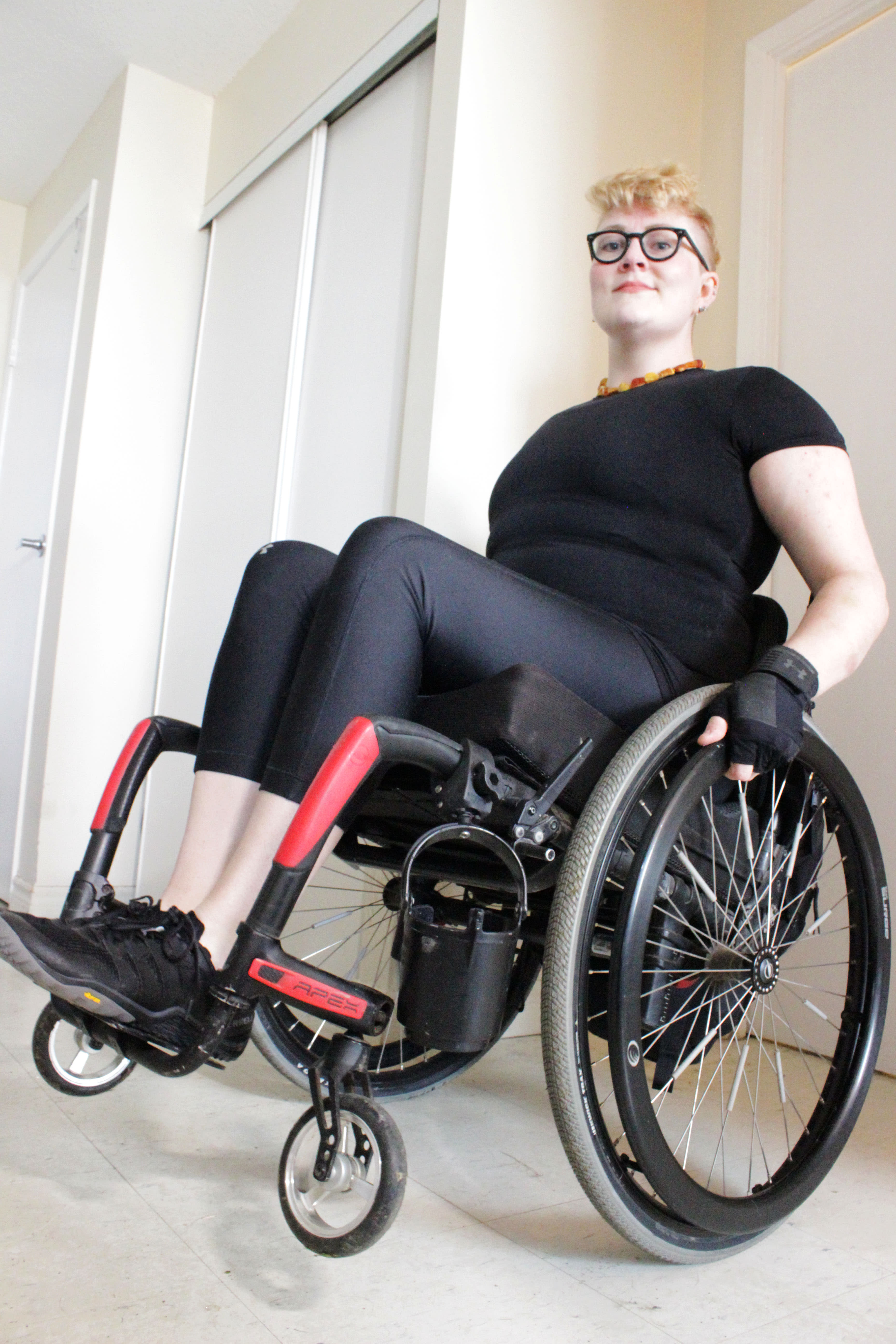
In a piece for Slate published in February, Liz Jackson and Jaipreet Virdi questioned the reason for the omission. They found the evolution of the FlyEase’s marketing narrative from a product made for disabled people to one pitched as beneficial for everybody woefully familiar. In this way, the group that the sneakers were originally made for is erased, and they become a tool for “a student racing to class or a parent with their hands full,” to quote Nike’s description of the Go FlyEase. The shoes went viral when they were unveiled in February, but disabled people were not featured in the brand-produced images that were endlessly shared on social media.
“Framing accessibility as an edgy marketing slogan without centering disabled people is problematic,” Jackson and Virdi wrote. “Disability is not a bad word.”
Some of Nike’s motivation for the Go FlyEase appears to have been to make a shoe tech that initially catered to one group of people newly relevant for a much bigger group of people. And that’s understandable—the company is ultimately in the business of selling as many shoes as possible. But disabled design consultant and writer Alex Haagaard believes widening the audience reduces access for the people who would benefit from the shoes the most.
“I think a lot of times people make the argument that design for disability has to appeal to the mainstream, to non-disabled people, in order to be viable,” they say. “I think if anything, what this whole mess reveals is the flaw in that logic, the ways in which that it also sets design for disability up to be something that is easily exploited and easily rendered really inaccessible.”
For Haagaard, Nike’s embrace of this philosophy of inclusive design is flawed. It falsely compares disabilities to situational impairments. It shows the extent to which big companies can misunderstand the needs of the people they sometimes try to serve.
“They sort of use disability as a way to build hype for the brand and don’t really think about the practical consequences for the actual community they purport to be representing,” Haagaard says.
Like Lingard, they were interested in the FlyEase shoe despite their issues with Nike’s presentation. Haagaard had researched a pair of Metcon FlyEase training shoes before deciding the rigid heel wouldn’t suit their accessibility needs. Lingard approves of the actual product, if not the way its story has been told. The story, and the place of disabled people in it, is important.
“The shoe is very perfectly designed for people with limited mobility in mind, and the [Jordan] FlyEase was as well,” Lingard says, “so it was just kind of odd to me that there wasn’t really anything brought up about it.”
What would he like to see from Nike? A different kind of support system for this unique shoe, one that reflects the people who FlyEase was originally inspired by.
“I think donating pairs to rehabilitation centers and programs at hospitals that work with disabilities would be a great thing for Nike to do,” Lingard says.
He’s been trying to get the brand’s attention directly, reaching out on social media as his TikTok video spread online, but hasn’t heard back as of the time of publishing. He did the same as a kid, writing to Nike and asking them to make cool sneakers for disabled people.
“I was sending them emails like that when I was in the sixth, seventh grade,” he says, “so this has been something I’ve been passionate about for a long time.”
The chorus of criticism around the rollout of the Go FlyEase comes in a year when consumers have been increasingly agitated over Nike’s missteps. The complaints have new reach that the brand cannot ignore.
Nike is being asked, with this shoe release specifically, to consider more carefully how to make it truly accessible. The company is being challenged to go beyond its standard tactics for hype manufacturing and find a better way to ensure that people with disabilities can get the Go FlyEase. Short of that, Lingard has a more modest request: just say the sneakers are for disabled people.
“That’s all I want,” he says. “All I want is to see the word ‘disabled’ or ‘limited mobility’ in their description of the shoe.”

